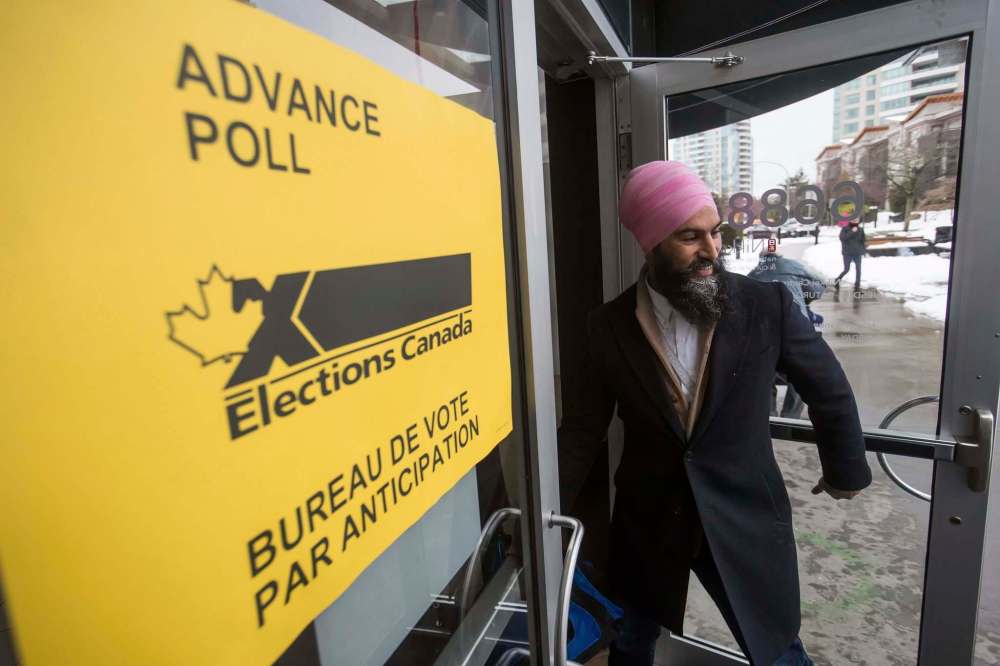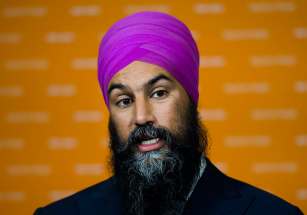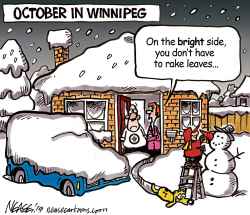Advance voting numbers encouraging
Read this article for free:
or
Already have an account? Log in here »
To continue reading, please subscribe:
Monthly Digital Subscription
$0 for the first 4 weeks*
- Enjoy unlimited reading on winnipegfreepress.com
- Read the E-Edition, our digital replica newspaper
- Access News Break, our award-winning app
- Play interactive puzzles
*No charge for 4 weeks then price increases to the regular rate of $19.00 plus GST every four weeks. Offer available to new and qualified returning subscribers only. Cancel any time.
Monthly Digital Subscription
$4.75/week*
- Enjoy unlimited reading on winnipegfreepress.com
- Read the E-Edition, our digital replica newspaper
- Access News Break, our award-winning app
- Play interactive puzzles
*Billed as $19 plus GST every four weeks. Cancel any time.
To continue reading, please subscribe:
Add Free Press access to your Brandon Sun subscription for only an additional
$1 for the first 4 weeks*
*Your next subscription payment will increase by $1.00 and you will be charged $16.99 plus GST for four weeks. After four weeks, your payment will increase to $23.99 plus GST every four weeks.
Read unlimited articles for free today:
or
Already have an account? Log in here »
Hey there, time traveller!
This article was published 16/10/2019 (2246 days ago), so information in it may no longer be current.
At least 4.7 million Canadians voted in the four-day advance polls ahead of Monday’s federal general election. This was 29 per cent more than turned out to the advance polls at the election four years ago. This suggests a nation eager to vote.
Similarly, at the polling stations set up on university and college campuses (for the many students who are far from home on voting day), about 111,300 people voted, compared to 70,000 four years ago. Here again, it sounds like the public is engaged, paying attention and eager to take part in the national political process.
It helped, of course, that Elections Canada has bent over backwards to make it easy for people to use the advance polls and the campus polls. More advance polling places were opened than previously, and they were kept open longer on each of the four days.

In Manitoba’s Sept. 10 election, by comparison, easier access raised advance turnout by three per cent from the 2016 election, in a context in which overall turnout actually dropped from 57 per cent to 55 per cent.
Opening more polling places would probably not produce a 29 per cent increase in turnout if the public were disengaged, turning away in disgust from the national election.
Political parties will be nervously watching these indicators, wondering what they mean for one party or another. Are the people lining up to vote because they adore Justin Trudeau? Because they are swept up by Scheer-mania? Because they want to build or block pipelines? Because they are excited about Jagmeet Singh or Elizabeth May or one of the others? No way of knowing just yet.Are the people lining up to vote because they adore Justin Trudeau? Because they are swept up by Scheer-mania? Because they want to build or block pipelines? Because they are excited about Jagmeet Singh or Elizabeth May or one of the others? No way of knowing just yet.
Voter turnout in Canadian federal elections peaked at around 79 per cent in the John Diefenbaker years of the early 1960s, and then declined pretty steadily to around 60 per cent in the early 2000s. The 69 per cent turnout in 2015 seemed to mark a shift, perhaps reflecting the emergence of Justin Trudeau as a new, young, interesting leader.
The long decline in turnout sparked a good deal of national soul-searching about the reasons that might explain declining participation. Elections Canada expanded advance voting opportunities to make sure they were not throwing needless obstacles in the way of voters.

There was reason to fear the nasty tone of election campaigns was irritating voters and leading an increasing number to turn away in disgust from the whole electoral process. Political parties have concluded in recent years attack ads — slickly produced mass-media campaigns that personally smear an opponent — are an efficient way to capture public attention and discourage people from voting for the other side. But if the people are being discouraged from voting for each of the parties, some might stop voting altogether — which is what we have seen for half a century in Canada.
The election campaign now coming to an end has been unusually nasty, with parties diligently digging up all the dirt they could find or imagine about their opponents and flinging it with all their might. You might expect the disenchanted public to turn away.
Perhaps not. The evidence from the advance polling numbers and the campus poll turnouts seems to show a nation that cares about who leads, values the opportunity to choose them and is determined not to be left out when the great choices are being made.










